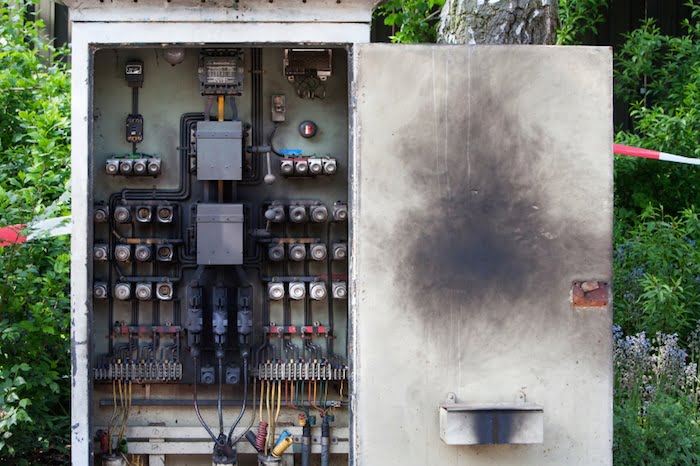Will a Cabinet Cooling Fan Cut It with High Ambient Air Temperatures?

Cooling fans are a simple and efficient way of cooling electrical cabinets. They are robust, inexpensive and, provided the heat load is not excessive, effective. An important characteristic of fan cooling is the temperature difference between the enclosure air and the ambient air because this is an important factor in determining the amount of heat that can be removed.
High ambient air temperatures impose certain constraints that limit the effectiveness of cabinet cooling fans, and their use needs to be carefully evaluated. Several aspects should be considered.
How Cooling Fans Work
Cooling fans work by passing cool air over hot equipment. Their efficacy depends on the volume of air and the temperature differential between the air and the equipment.
It’s usual to blow air from the bottom to the top of the cabinet so as to benefit from the natural tendency of hot air to rise. The quantity of heat removed depends on the air flow and the temperature difference; the formula for calculating this takes into account the density of the air and its specific heat capacity.
It should be noted that the cabinet or enclosure will be hotter than the surrounding air, but this does not mean the components will be damaged. Operating temperatures for electrical equipment is specified by the manufacturer, but it is often well above the comfortable room temperature of 70 degrees Fahrenheit.
Temperature Differential
For cooling fans to reach optimum efficiency, the higher the difference in temperature between the ambient air and the enclosure air, the better. However, in high ambient temperatures a large differential is difficult to achieve, which restricts the application of cooling fans.
The ambient temperature is determined by the maximum temperature that’s expected during peak temperatures in the location where the enclosure or cabinet is installed.
As mentioned, the maximum enclosure temperature is governed by the temperature ratings of the equipment installed inside the enclosure and is largely influenced by the type of equipment used. Electro-mechanical equipment is robust and can usually tolerate temperatures up to 140 °F.
Equipment such as VFDs and PLCs is more sensitive and the maximum allowable temperature varies between 110 and 125 °F, although some manufacturers allow higher temperatures provided derating factors are applied.
Volume of Air
In any given situation, the temperature differential is fixed and the only means of increasing cooling is to increase the volume of air blown through the enclosure. Fortunately, the available is wide, with some units capable of 750 CFM, and it may be necessary to use one or more such fans to obtain adequate cooling in high ambient temperatures.
Heat Load
The final aspect to consider is the heat load in the cabinet. This is obtained by summing the heat loss of each individual piece of equipment. This technical information is readily obtainable from equipment manufacturers.
The heat generated by electro-mechanical equipment such as relays and contactors is low, but variable frequency drives and similar equipment release a significant amount of heat, the amount depending on the drive efficiency and load.
Determining Whether Fans Will Cut It
Because the heat load, temperature differential, and air flow are interrelated, the successful use of fans in high ambient temperatures depends upon minimizing the heat load and choosing fans with adequate capacity. The actual temperature difference, and hence the cabinet temperature, will be determined by the combination of the heat load and cooling air flow and can be established by using an online BTUH Calculator.
In the right conditions, fan cooling in high ambient temperatures is possible, but care must be taken to ensure allowances are made for temperature extremes. Additionally, it should be noted that equipment life and reliability are affected if the equipment is allowed to exceed its maximum operating temperature.
At Thermal Edge, we understand these constraints and our technical experts can help you make the right decision.

